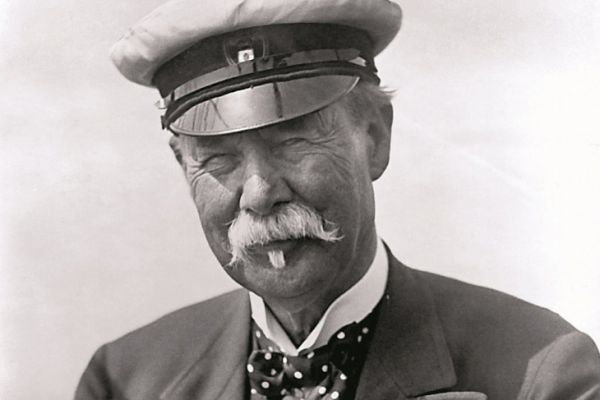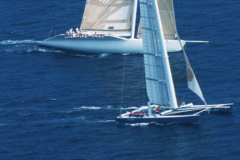Who could have believed that the son of an obscure Glasgow shopkeeper would become a name that counts in the history of sailing? One can only be impressed by the career of Thomas Lipton, who has worked his way up from a nameless back store to the prestigious circles of the most mythical of nautical competitions: the famous America's Cup!
A hard worker
Born in 1850 in Scotland, Thomas Johnstone Lipton came from a modest background. His parents fled the Great Famine in Ireland a few years before his birth and opened a small store in Glasgow.
Thomas did not stay long at school and found, at the age of ten, his first job in a paper mill. Already full of ambition, he did not stay long and went to work for a tailor, then embarked as a cabin boy on the shipping line between Glasgow and Belfast. His love of the sea was already well established. He would later say that he was never happier than when he was in the atmosphere of ships, sailors, boats and the waterfront in general.
He was only 15 years old when he decided to try his luck in the United States. There, he worked in various sectors before getting a job as an assistant in a large grocery store in New York. There he learned modern sales techniques and the art of advertising.
With this experience, he returned to Glasgow in 1869 to develop his parents' store. He was 19 years old and full of ideas.
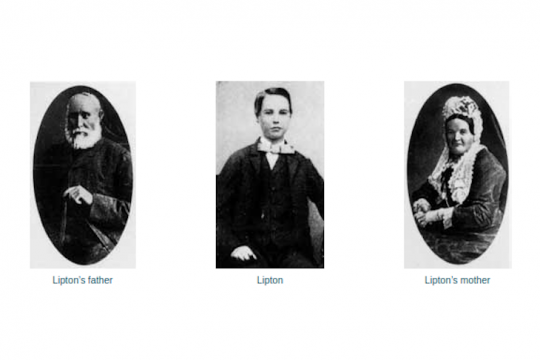
From a small store to a business empire
Applying American recipes, it was only two years before Thomas Lipton opened his own business a few blocks away. The opening of many other stores will follow in the following years.
Thomas Lipton has two main lines of conduct: bypassing the middlemen by buying directly from the producers to lower prices, and making the most of the effects of advertising.
This is exactly what he is doing to democratize tea in the United Kingdom, buying directly from plantations in Ceylon to supply himself at a lower cost, and to offer a more affordable "Lipton" tea. At forty, Thomas Lipton is a very rich man.
The love of sailing
Beyond business, Thomas Lipton loves boats. He himself owns a steam yacht, Erin, on which he invites many prestigious guests. Among his guests are the King of England, Queen Alexandra, practically all the royal figures of Europe and all those who count on both sides of the Atlantic.
Nevertheless, his passion turned him towards the world of regatta. He became known as the most persevering challenger in the America's Cup. He financed five sailboats that he named Shamrock, from the native name of the Irish shamrock, symbol of the country of his ancestors.
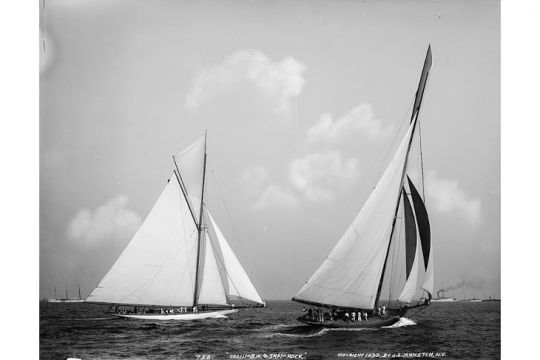
The first challenge took place in 1899. Sir Thomas Lipton, knighted in 1898, became the challenger for the Royal Ulster Yacht Club. He presented a sailboat designed by the Scottish architect William Fife the third of the name. It is a cutter of more than 38 meters long and more than 1200 m² of sail area. However, although Shamrock bat Britannia the yacht of the royal family, in a regatta around the Isle of Wight, he lost in New-York the three races against the American defender Columbia .
In 1901, Thomas Lipton presents Shamrock 2 for a second challenge. This one was designed by George Lennox Watson. With a length of 41 meters, it is not much luckier than the first one Shamrock, and lost all three legs of the America's Cup against Columbia.
Two years later, Thomas Lipton lined up a new challenger designed by William Fife, Shamrock 3 in front of the defender Reliance barred by Charlie Barr. Without more success, Shamrock 3 is beaten.
Thomas Lipton does not admit defeat. He started to build Shamrock 4 for a new challenge, which took place in 1920, after the war. This time, it was Charles Ernest Nicholson who designed the sailboat. At the end of a close match three to two, he still lost to the defender Resolute .
Finally, in 1930, Thomas Lipton had a last challenger built, Shamrock 5 designed by Charles Ernest Nicholson. This boat still can't win in front of the defender Enterprise .
With these five challenges lost, Thomas Lipton receives a special cup for " the best of all the losers ". In his autobiography, published shortly after his death, Thomas Lipton said that thirty years of chasing the America's Cup gave him " joy, health and splendid friends ". Thanks to this, he has remained " young, enthusiastic, lively and hopeful "although he never managed to " lift this old cup "as he called the silver ewer, the Cup trophy.
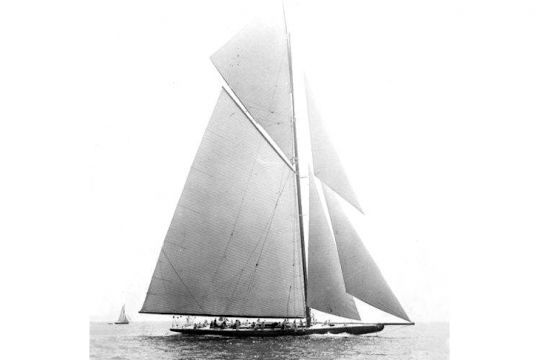
The end of an extraordinary life
Thomas Lipton died in his sleep, at his home, on October 2, 1931. He was 81 years old. It is said that he was planning a sixth challenge for the America's Cup.
He is buried in Glasgow, near his family. Unmarried and childless, almost all of his wealth was distributed to the poor according to the terms of his will.

